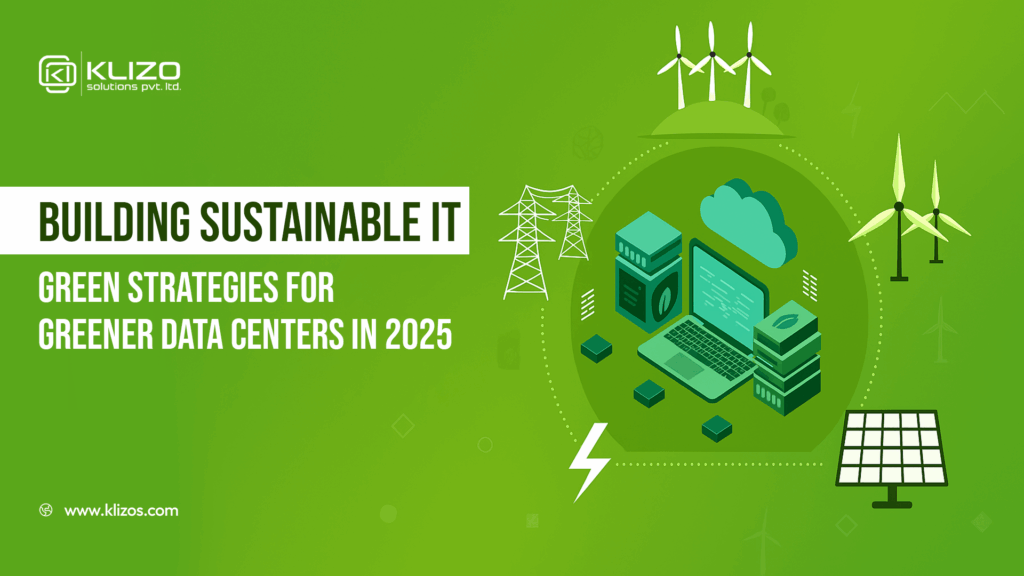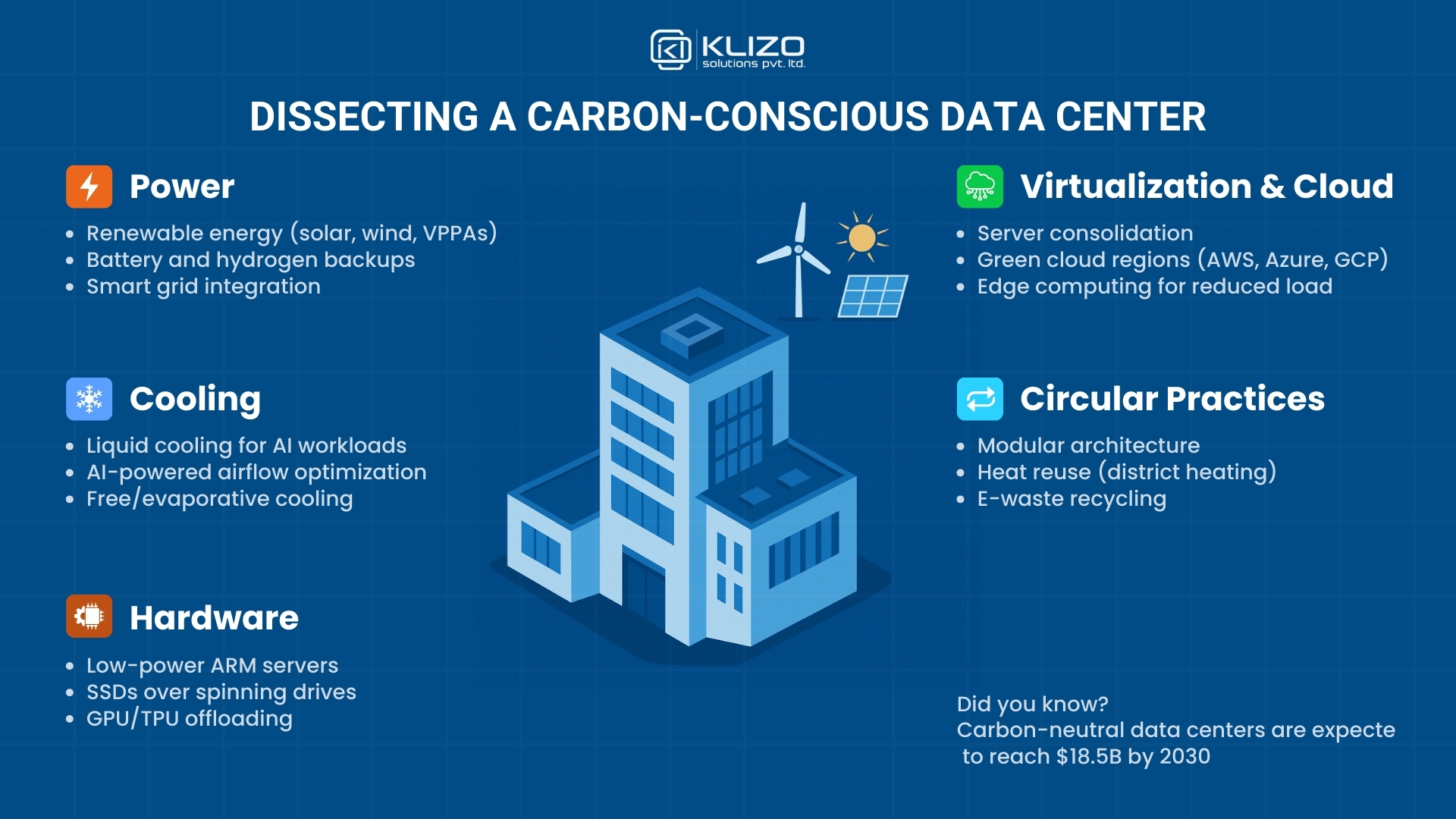


The explosion of digital services, AI, and cloud infrastructure has reshaped the way businesses operate—but it has also put immense pressure on our planet. With data centers now responsible for nearly 1% of global greenhouse gas (GHG) emissions and projections estimating this number could rise to 14% by 2040, it’s clear the IT sector must undergo a green transformation.
Sustainable IT is no longer a buzzword. It’s a necessity. Businesses, governments, and consumers are demanding greener operations. The push is coming from multiple directions: climate regulations like the EU’s CSRD, increasing energy costs, investor scrutiny, and employee values.
At Klizo Solutions, we believe that the future of technology is one where performance and sustainability go hand in hand. This guide outlines the key strategies, technologies, and metrics that can help your business become part of the green IT revolution.
IT’s environmental footprint is growing fast:
But the rewards aren’t just environmental. Companies that embed sustainable practices into their IT strategies report higher operational efficiency, brand trust, and investor appeal. The World Economic Forum notes that sustainable digital infrastructure is directly tied to long-term competitiveness.
To meaningfully reduce emissions, organizations need to track:
Understanding these metrics allows teams to benchmark, optimize, and report sustainability efforts. Tools like Data Center Infrastructure Management (DCIM) software and AI-driven monitoring are critical here.

Modern data centers must go beyond grid electricity. Leading players are turning to:
Cooling accounts for over 30% of data center energy usage. Solutions include:
Digital Realty uses AI (Apollo) to dynamically adjust cooling and power use, reducing emissions by up to 60% per square foot.
Cloud platforms like AWS and Google Cloud now offer low-carbon regions. Virtual machines allow multiple workloads per server, reducing idle capacity.
Remote work isn’t just a cultural shift—it’s a sustainability move:

Digital Realty, a global colocation provider, reduced direct emissions by over 60% by combining renewable energy procurement, AI cooling, and sustainable design.
Why it matters:
Green IT is not just a tech trend—it’s a competitive strategy. As enterprises increasingly rely on data, AI, and global cloud infrastructures, the environmental impact must be addressed head-on.
From redesigning your data centers to rethinking device policies and adopting AI-powered optimization, the time to act is now.
At Klizo Solutions, we help businesses integrate sustainability into every layer of their tech stack—whether that’s building eco-conscious SaaS platforms, optimizing backend infrastructure, or redesigning digital experiences for minimal waste.
🌱 Ready to go green? Contact our sustainability tech team here.
Joey Ricard
Klizo Solutions was founded by Joseph Ricard, a serial entrepreneur from America who has spent over ten years working in India, developing innovative tech solutions, building good teams, and admirable processes. And today, he has a team of over 50 super-talented people with him and various high-level technologies developed in multiple frameworks to his credit.

Subscribe to our newsletter to get the latest tech updates.